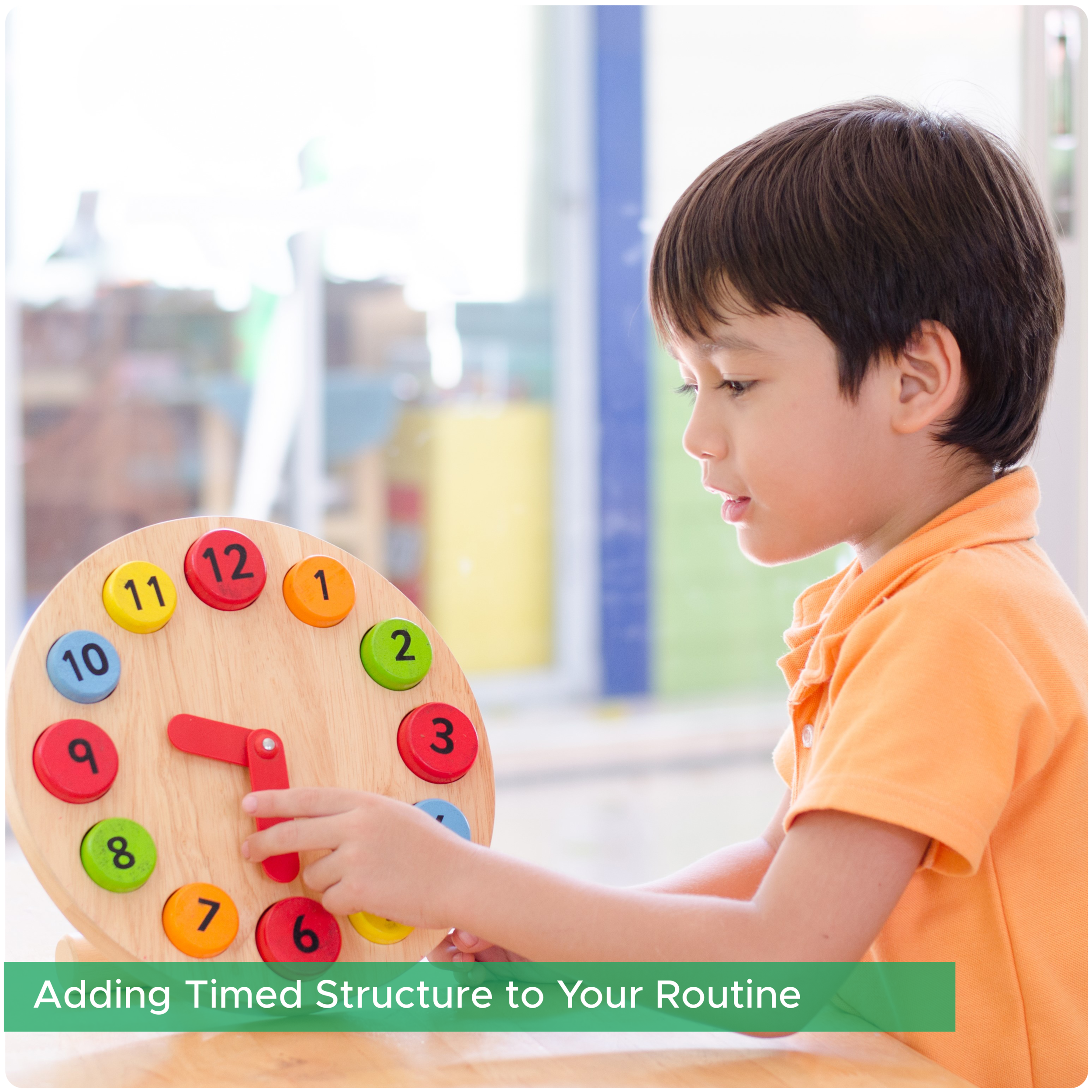Tips For Adding Timed Structure to Your Routine
Day-to-day routines can often become overwhelming and stressful for parents with a child who has autism spectrum disorder. Common daily and to-do routines can often fall by the wayside and end up being disregarded or never completed. Creating day-to-day structured routine can help a parent feel more organized and assist in having your child stay on track with their daily structure and routine.
Adding a time component to the daily tasks can add additional structure and planning to help you and your child navigate through the day. The first helpful tip is to get and use a calendar. A wall calendar can be a great option to use as a visual, or even a table-top calendar can help. Using the calendar, write the daily things that need to be done with the time segment it will take to complete the task. If your child can read time, great! Write out the activities to occur at that specific time of day. Or, if your child cannot read time, use a box or icon to indicate the length of the task by using a different sized icon or box/square on the calendar. So, for example, if completing dressing and getting ready for the day is the task, the size of the icon will be larger than say, washing hands or brushing teeth. Allocate the activities or duties to be completed during the day in sequential order and cross them off as they occur.
Another helpful tip is to use color to indicate repeating tasks or different colors to indicate a preferred or non-preferred (must-do) task, so it helps your child to see what is coming up and to create a sense of predictability. Knowing what is going to happen next and what is upcoming can help ease anxiety or stress by seeing what is coming up, and how long it will take (long vs. short task) to complete.
You can also utilize timers to indicate tasks that may be a short duration or not take up a lot of time. For example, if brushing teeth should take about 2 minutes, using a timer can help habituate your child to the timing of the task. Marking off completed tasks can also be helpful as a visual for your child to recognize a routine is complete and now over. Continue to update the calendar throughout the week or prepare it for the upcoming week and stick with it to continue to increase predictability of ongoing tasks and routines.
Carrie Pilkington, M.S., BCBA, LMFT, LBA
Regional Clinical Director

